Muscles of Chordates Development, Homologies, and Evolution
Auteurs : Diogo Rui, Ziermann Janine M., Molnar Julia, Siomava Natalia, Abdala Virginia

Chordates comprise lampreys, hagfishes, jawed fishes, and tetrapods, plus a variety of more unfamiliar and crucially important non-vertebrate animal lineages, such as lancelets and sea squirts. This will be the first book to synthesize, summarize, and provide high-quality illustrations to show what is known of the configuration, development, homology, and evolution of the muscles of all major extant chordate groups. Muscles as different as those used to open the siphons of sea squirts and for human facial communication will be compared, and their evolutionary links will be explained. Another unique feature of the book is that it covers, illustrates, and provides detailed evolutionary tables for each and every muscle of the head, neck and of all paired and median appendages of extant vertebrates.
Key Selling Features:
- Has more than 200 high-quality anatomical illustrations, including evolutionary trees that summarize the origin and evolution of all major muscle groups of chordates
- Includes data on the muscles of the head and neck and on the pectoral, pelvic, anal, dorsal, and caudal appendages of all extant vertebrate taxa
- Examines experimental observations from evolutionary developmental biology studies of chordate muscle development, allowing to evolutionarily link the muscles of vertebrates with those of other chordates
- Discusses broader developmental and evolutionary issues and their implications for macroevolution, such as the links between phylogeny and ontogeny, homology and serial homology, normal and abnormal development, the evolution, variations, and birth defects of humans, and medicine.
Preface
About the Authors
Acknowledgments
Chapter 1 Introduction
Chapter 2 Methodology
Chapter 3 Non-Vertebrate Chordates and the Origin of the Muscles of Vertebrates
Chapter 4 General Discussion on the Early Evolution of the Vertebrate Cephalic Muscles
Chapter 5 Cephalic Muscles of Cyclostomes and Chondrichthyans
Chapter 6 Cephalic Muscles of Actinopterygians and Basal Sarcopterygians
Chapter 7 Development of Cephalic Muscles in Chondrichthyans and Bony Fishes
Chapter 8 Head and Neck Muscle Evolution from Sarcopterygian Fishes to Tetrapods, with a Special Focus
on Mammals
Chapter 9 Head and Neck Muscles of Amphibians
Chapter 10 Head and Neck Muscles of Reptiles
Chapter 11 Development of Cephalic Muscles in Tetrapods
Chapter 12 Pectoral and Pelvic Girdle and Fin Muscles of Chondrichthyans and Pectoral-Pelvic Nonserial Homology
Chapter 13 Pectoral and Pelvic Muscles of Actinopterygian Fishes
Chapter 14 Muscles of Median Fins and Origin of Pectoral vs. Pelvic and Paired vs. Median Fins
Chapter 15 Development of Muscles of Paired and Median Fins in Fishes
Chapter 16 Pectoral and Pelvic Appendicular Muscle Evolution from Sarcopterygian Fishes to Tetrapods
Chapter 17 Forelimb Muscles of Tetrapods, Including Mammals
Chapter 18 Forelimb Muscles of Limbed Amphibians and Reptiles
Chapter 19 Hindlimb Muscles of Tetrapods and More Insights on Pectoral–Pelvic Nonserial Homology
Chapter 20 Development of Limb Muscles in Tetrapods
References
Index
Rui Diogo is an Associate Professor at Howard University College of Medicine and a member of the Resource Faculty at the Center for the Advanced Study of Hominid Paleobiology at George Washington University. One of the youngest researchers to be nominated as Fellow of the American Association of Anatomists, he won several prestigious awards, being the only researcher to be selected for the first/second place for best article of the year in the top anatomical journal two times in just three years (2013/2015). Author or co-author of more than 100 papers in top journals, such as Nature, and of numerous book chapters, he is the co-editor of three books and the sole or first author of eleven books covering subjects as diverse as fish evolution, chordate development, and human medicine and pathology, including a book adopted at medical schools worldwide, "Learning and understanding human anatomy and pathology: an evolutionary and developmental guide for medical students.
Julia Molnar is a Research Associate in the College of Medicine at Howard University in the Department of Anatomy.
Janine Ziermann is an Assistant Professor in the Department of Anatomy at Howard University's College of Medicine.
Date de parution : 05-2018
21x28 cm
Disponible chez l'éditeur (délai d'approvisionnement : 14 jours).
Prix indicatif 220,72 €
Ajouter au panierDate de parution : 06-2018
21x28 cm
Disponible chez l'éditeur (délai d'approvisionnement : 14 jours).
Prix indicatif 74,82 €
Ajouter au panierThèmes de Muscles of Chordates :
Mots-clés :
Adductor Mandibulae; ontogeny and phylogeny; Branchial Muscle; morphology; Hypobranchial Muscles; embryology and developmental biolgy; Depressor Mandibulae; evolutionary theory; Branchial Muscles Sensu Stricto; Janine M; Ziermann; Levator Hyoideus; Julia Molnar; Protractor Pectoralis; Natalia Siomava; Cephalic Muscles; Virginia Abdala; Flexores Breves Profundi; Pectoral Fin; Hyoid Muscles; Mandibular Muscles; Adductor Mandibulae A2; Adductor Operculi; Flexores Breves; Flexor Digitorum Communis; Adductor Superficialis; Dilatator Operculi; Arrector Ventralis; Dilatator Laryngis; Flexor Digitorum Longus; Pelvic Appendage; Nonmammalian Tetrapods; Pectoral Appendage; Adductor Hyomandibulae



